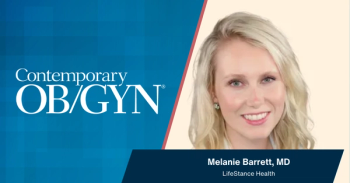
Health literacy and maternal/neonatal outcomes
Pregnant individuals with inadequate health literacy have a greater risk of cesarean delivery, major perineal laceration, small-for-gestational-age status and low birth weight, compared to individuals with adequate heath literacy, according to an analysis of data from a large, multicenter cohort study of nulliparous individuals in the United States.
The analysis in JAMA Network Open also concluded that inadequate health literacy was associated with an Apgar score of less than 4 at 5 minutes after delivery.
“It is well known that health literacy is an important social determinant of health in the general adult population,” said Lynn M. Yee, MD, MPH, principal investigator of the analysis and an assistant professor of obstetrics and gynecology at Northwestern University Feinberg School of Medicine in Chicago. “But health literacy has been relatively understudied during
Yee and her colleagues were particularly interested in understanding if the relationships that have been observed in non-obstetric medicine also are found in the obstetric population, such as whether inadequate health literacy is associated with suboptimal pregnancy outcomes.
“This issue is important because if health literacy is connected to adverse pregnancy outcomes, then addressing health literacy represents a potential area for future interventions to improve the health of pregnant people and newborns,” Yee told Contemporary OB/GYN®. “Differences in health literacy also likely contribute to health disparities, and thus confronting health literacy may be one understudied avenue to reduce health disparities.”
The Nulliparous Pregnancy Outcomes Study: monitoring mothers-to-be (nuMoM2b) from 2010 to 2013 included evaluating health literacy among 9,341 of the 10,038 participants. Health literacy was assessed between 16 and 21 weeks of gestation via the Rapid Estimate of Adult Literacy in Medicine-Short Form (REALM-SF), a validated 7-item word recognition test. The mean age of participants who completed the form was 27 years, of whom 27.4% had publicly funded prenatal care.
Overall, 17.5% of pregnant individuals in the study had scores reflecting inadequate health literacy.
Participants with inadequate health literacy were significantly more likely to be younger, have less educational attainment or have publicly funded insurance. They were also significantly more likely to identify as non-Hispanic Black or Hispanic.
Likewise, individuals who had inadequate health literacy were 1.11 times more likely to have cesarean delivery, 1.44 times more likely to incur major perineal laceration and 1.34 time more likely to have small-for-gestational-age status neonates, compared with pregnant individuals with adequate health literacy.
They were also 1.33 times more likely to have a child with low birth weight and 2.78 times more likely for their child to score less than 4 on the 5-minute Apgar score.
“We were not surprised at the high prevalence of inadequate health literacy in the study, because this issue is common in the general adult population,” Yee said. “I was somewhat surprised, though, at the associations with perinatal outcomes. For example, I think it is logical that inadequate health literacy may be linked to birth outcomes like cesarean delivery, but I was surprised health literacy was not associated with gestational diabetes. This may be an important area for future study.”
In addition, many studies examine education level or patient language as a proxy for patient understanding or knowledge, according to Yee. “But this is a limited perspective on health education and communication,” she said. “Our analysis suggests health literacy is a different social determinant of health that acts independently from education and language.”
Strategies to improve health literacy in clinical practice include assuming that all patients may have low health literacy, using simple messages, checking for patient understanding, using easy-to-read written communication, limiting the number of messages delivered at once, and using written pictures and diagrams when possible.
“Studying the effectiveness of health literacy interventions to help improve perinatal health outcomes or the quality of patient-provider communication would be valuable,” Yee said.
__
Reference
Yee LM, Silver R, Haas DM, et al. Association of health literacy among nulliparous individuals and maternal and neonatal outcomes. JAMA Netw Open. 2021;4(9):e2122576. doi:1001/jamanetworkopen.2021.22576
Newsletter
Get the latest clinical updates, case studies, and expert commentary in obstetric and gynecologic care. Sign up now to stay informed.










